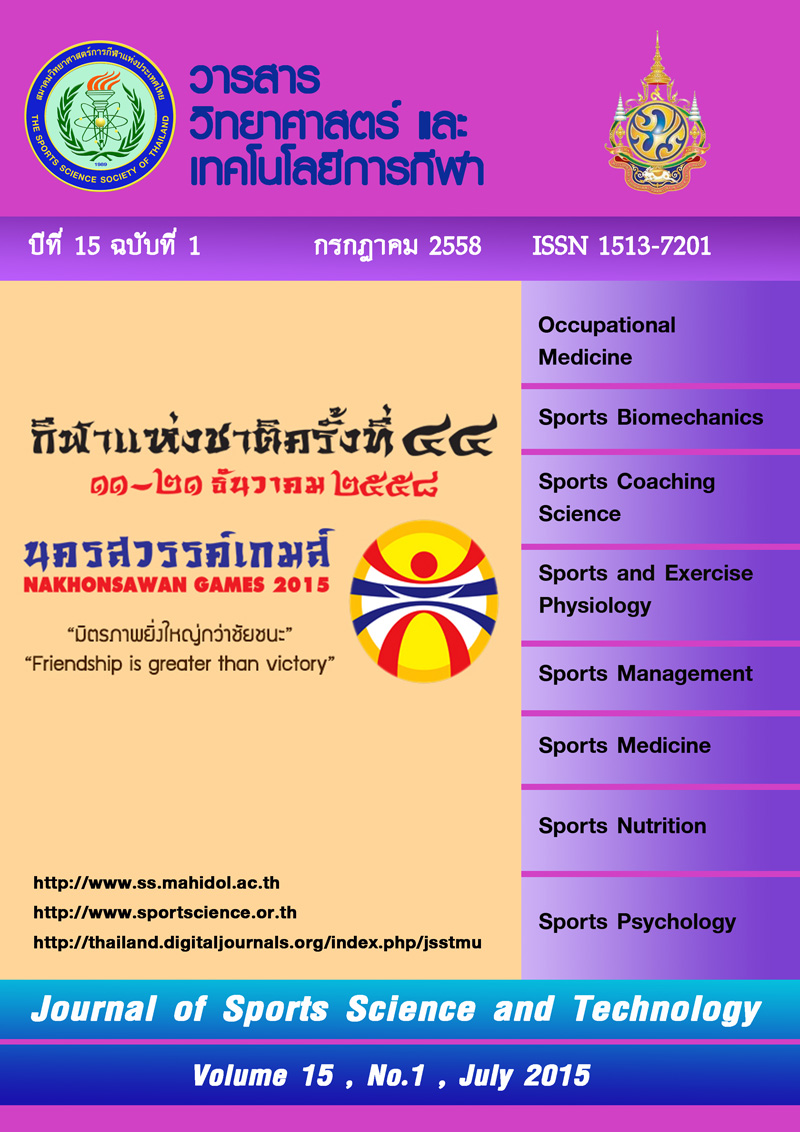THE ACUTE EFFECT OF COLD SHOWERS RECOVERY METHOD ON CORE TEMPERATURE, HEART RATE, AND THERMAL SENSATION SCALE AFTER EXERCISE IN HOT ENVIRONMENT
คำสำคัญ:
cooling recovery method, core temperature, heart rate, thermal sensation scaleบทคัดย่อ
The purpose of this study was to compare the acute effect of cooling recovery method using cold water showers and sit in 15 °C temperature on core temperature (Tc), heart rate (HR) and thermal sensation scale (TSS) after exercise in hot environment. Nine subjects underwent 15 min of two recovery methods; sit in 15 °C room temperature (SIT15) and 15 °C water showers (CWS), after exercise at 65% O2peak for 45 minutes in hot environment (35 °C room temperature, relative humidity (rh) 40-60%). Measures of HR, and Tc were recorded every 30 minutes (min) throughout the experiment. TSS was obtained every 15 min until the end of the experimental trial. Results found that the values of Tc and HR were not different between SIT15 and CWS methods after 15 min intervention period. The values of HR but not Tc found to decrease at post intervention period (p < 0.05) in both recovery methods. TSS was lower in SIT15 (-3; feeling cold) versus CWS (-2; feeling cool) (p < 0.05). Our results concluded that recovery method either taking cold showers or sit in 15 °C room temperature had the same acute effect on reducing HR but not changing Tc of the subjects. However a comfortable sensation mediated benefit of CWS over SIT15 recovery method implicates taking a cold shower may be the good choice of an alternative recovery method after exercise in Thai athlete.
(Journal of Sports Science and Technology 2015;15(1): 91-98 )






